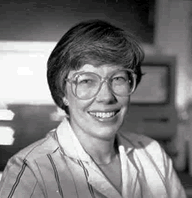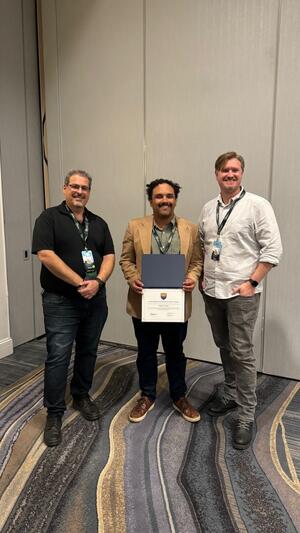
Charles Lomba, graduate student, was one of fifteen awardees of the Margaret C. Etter Student Lecturer Award presented by the American Crystallographic Association (ACA). This was the inaugural award for the MicroED Scientific Interest Group (SIG).
 Named in honor Professor Margaret C. Etter, this award seeks students from each SIG and the Canadian Division to present a lecture in one of the sessions organized by that SIG. Award finalists are selected based upon submitted abstracts. Winners are determined by the elected officers of the SIGs.
Named in honor Professor Margaret C. Etter, this award seeks students from each SIG and the Canadian Division to present a lecture in one of the sessions organized by that SIG. Award finalists are selected based upon submitted abstracts. Winners are determined by the elected officers of the SIGs.
Lomba was invited by the MicroED SIG and presented his lecture, “Access and Experiments with MicroED at Yale University for Biomaterials Characterization” at the 74th Annual meeting of the American Cryastallographic Association in Denver, CO.
 Charles comments, “MicroED is an emerging technique with applications in the fields of materials science, chemistry, structural biology, and physics. Traditionally, crystallography uses x-ray radiation to study microscopic-sized crystals. MicroED allows crystallographers to study nanoscopic crystals using the electrons from an electron microscope. This is very useful for studying molecules that do not easily crystallize as the stronger interaction of electrons with atoms allows for the study of nanoscopic crystals. I am applying the technique in Prof. Sweeney’s group to study how a class of intrinsically disordered proteins (IDPs) and derived peptides from squid interact with metals. I hope to gain insights into the conformational changes that could result from metal interactions and how this may drive the assembly and optical properties of these IDPs.”
Charles comments, “MicroED is an emerging technique with applications in the fields of materials science, chemistry, structural biology, and physics. Traditionally, crystallography uses x-ray radiation to study microscopic-sized crystals. MicroED allows crystallographers to study nanoscopic crystals using the electrons from an electron microscope. This is very useful for studying molecules that do not easily crystallize as the stronger interaction of electrons with atoms allows for the study of nanoscopic crystals. I am applying the technique in Prof. Sweeney’s group to study how a class of intrinsically disordered proteins (IDPs) and derived peptides from squid interact with metals. I hope to gain insights into the conformational changes that could result from metal interactions and how this may drive the assembly and optical properties of these IDPs.”
Alison Sweeney, associate professor of physics and of ecology and evolutionary biology and Lomba’s advisor, commented, “I couldn’t be prouder of Charles’s work that contributed to his winning this award. He is fully committed to becoming one of the top crystallographic scientists of his generation and has chosen to work on a particularly challenging but exciting and interesting problem involving intrinsically disordered, metal-binding peptides. I’m so excited for him that his commitment and hard work are being recognized by the larger crystallographic community.”